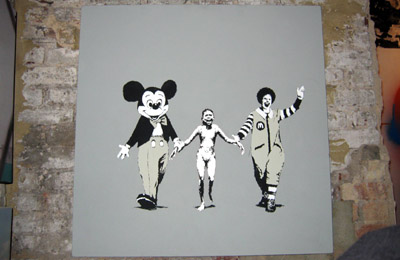"Introduction: Who Needs 'Identity'?" Stuart Hall
I think identity is something that is a really hard topic to deal with because it encompasses so much . I think Halls ideas about identity starting with the idea of identification is a good place to start. We see ourselves be identifying with a set of characteristics of a certain group and therefore it is a process of construction.
Thus because we construct are own identities they also change over time . Just like our identities change so do those of cultures , due to historical reasons such as globolization or colorization . These changes in cultural identity also effect personal identity as the groups we identify with change .
This idenitity isn't constructed through difference , we can only construct our identity if we can see the "other" . We find ourselves in what we lack. thus idenidy can only be formed where two different sides meet and identity can only exist at a site of conflict between two differing sides .
I think an artist who really embodies identity conflict is Adrian Piper. Because of her light colored skin she is able to pass for both black and white , witch allows her
 to embody two sides of racial identity politics . My favorite piece of work by her is her calling card series which really confronts the viewer to think about identity politics and why we create these sites of conflicts related to race in our society .
to embody two sides of racial identity politics . My favorite piece of work by her is her calling card series which really confronts the viewer to think about identity politics and why we create these sites of conflicts related to race in our society .I think you can see it even more so in a reaction to Pipers work that I found on youtube where as any race can be placed into the card , calling on the universality of the problem .
I think both piece question why we have made racial identity such an issue and how it still continues to be a problem for many people today. We shouldn't judge people on their identities .



